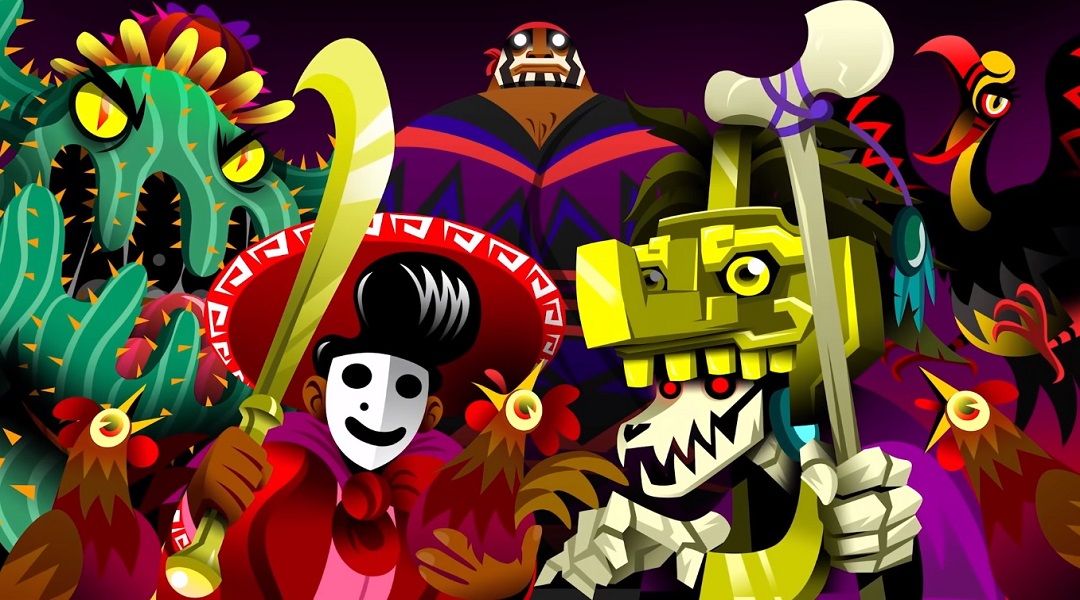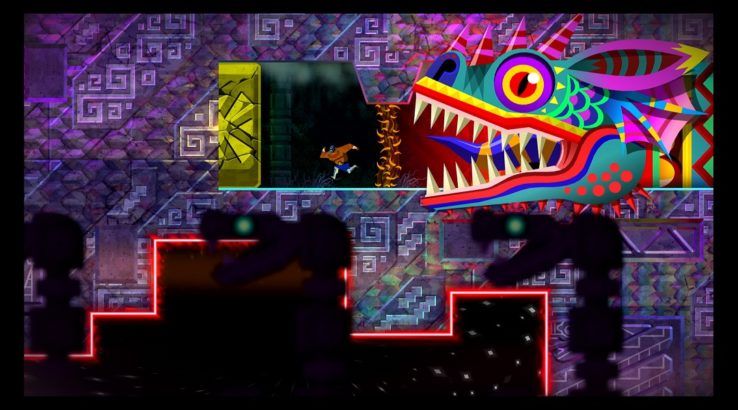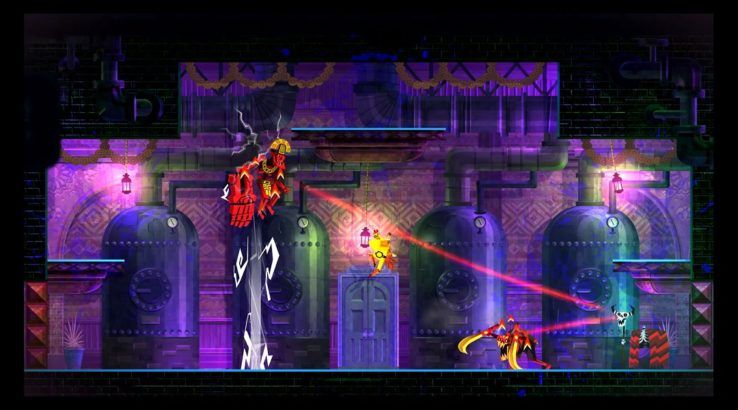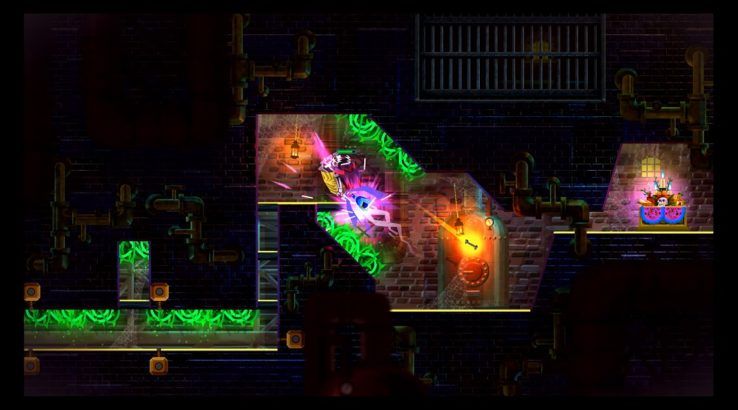Originally released back in 2013, the first Guacamelee! served as a successful twist on the Metroidvania genre, standing out from the pack thanks to its humor, unique art style, and co-op focus. Five years later, and developer Drinkbox Studios has finally released Guacamelee! 2, a followup that not only matches the first game's quality, but exceeds it.
Guacamelee! 2 is a love letter to Mexican culture, professional wrestling, and of course, video games. The game world is filled with clever references not just to games like Castlevania and Metroid, but to everything from Final Fantasy to Resident Evil. Its humor is as sharp as ever, and like the first game, it has jokes that will appeal to the masses as well as clever, more obscure gags that only hardcore fans will truly appreciate.
Guacamelee! 2's humor is once again one of its strongest elements, especially in a genre dominated by moody, atmospheric games. This lightheartedness is reflected not just by the jokes and the tone of the story, but it's also apparent by the game's art style. Unlike many similar games, Guacamelee! 2 features brightly colored environments that are highly detailed and visually stunning, which helps to make each area of the game a treat to explore.
Exploration is a key component to any Metroidvania, and the same hold trues for Guacamelee! 2. Over the course of the game, protagonist Juan's ability to explore the game world is greatly expanded by the various attacks he learns, like the Rooster Uppercut that helps him reach high ledges or the Frog Slam that lets him smash through barricades on the floor. Mastering abilities and discovering ways to use them to better explore the game world is one of the driving forces of Guacamelee! 2 and makes it worthwhile to return to previously explored areas.
The Rooster Uppercut, Frog Slam, and other pieces of Juan's arsenal return from the first game (the way the game handles the trope of a Metroidvania protagonist losing all their abilities from the previous game is hilarious and creative, by the way), but he has some new tricks up his sleeve as well. One of the biggest additions is the Eagle Boost, which is activated using special objects in the environment that slingshot Juan in various directions depending on the angle they're approached. It was a bit of a challenge to get the hang of the Eagle Boost at first, but once it's mastered, using it to zip around the environment is a breeze and the ability is incorporated well into some of the game's more memorable platforming sections.
It's true that human Juan learns some new tricks during the events of Guacamelee! 2, but his chicken form gets special attention. Transforming into a chicken in the first game was done for little more than laughs, but Guacamelee! 2 makes being a chicken integral to the gameplay as well as the story. As a result, chicken Juan has access to more attacks than before, and players will have to get used to switching between the two forms quickly in battle. We sometimes found that switching between a chicken and a human was not always as responsive as it needed to be, but this problem wasn't too prevalent during our time with the game.
In fact, combat is almost always responsive, and smashing skeletons and other creatures with professional wrestling moves often makes up the most enjoyable parts of Guacamelee! 2. Having said that, the combat sections are a little on the short and easy side, even during later stages of the game. Hard mode isn't available until players complete the game once, so anyone that wants a little extra challenge may find their initial playthrough of Guacamelee! 2 too easy. Playing in co-op makes combat in Guacamelee! 2 even easier, and introduces some additional problems.
Despite four-player drop-in/drop-out local co-op being one of the game's main selling points, its implementation leaves something to be desired. For example, many of the platforming challenges, especially the ones where players have to switch between the living and dead worlds, are far too frustrating with multiple people attempting them at once. From a design standpoint, it seems as though these challenges and the mechanics tied to them were made with a solo player in mind, and don't really take co-op partners into account.
Co-op partners are sort of treated like second class citizens in Guacamelee! 2 in general. Co-op partners can't unlock achievements or trophies, and the camera basically pretends like they don't exist. So let's say Juan and Tostada (the default second player character) are both working their way through an area filled with glowing green thorns that, when touched, will send them back to the start. If Tostada touches the thorns, she will be sent back to the last platform she stood on, but the camera will stay with Juan. However, if Juan touches the thorns, the camera will whip right to his previous location, making it impossible for the second player to complete the challenge.
Does that mean co-op in Guacamelee! 2 isn't fun? Far from it. Playing through the game in co-op with friends can still be hugely entertaining, and while they may not feel quite as important as the first player and may become frustrated at times, co-op partners will still find it easy to appreciate everything else the game does right.
And Guacamelee! 2 does basically everything else right, and arguably better than a lot of other Metroidvania games on the market. Its core gameplay is tremendous, building off the original and feeling like a true step forward. It boasts sharper visuals, an expanded suite of abilities for Juan, and plenty of content for fans to sink their teeth into. Simply put, Guacamelee! 2 is bigger and better than the first game, and is an absolute must-play for any fans of the Metroidvania genre or the increasingly impressive body of work by the talented people at Drinkbox Studios.
Guacamelee! 2 is available now on PC and PS4. Game Rant was provided a PS4 code for this review.




